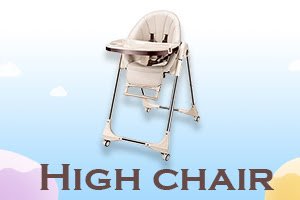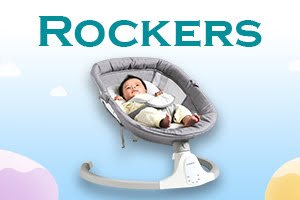7 Ways to Teach Your Baby to Feed Himself

You may be ready to help your baby start self-feeding now that he or she has been exposed to solids and has tasted a variety of foods and flavours. But when is it appropriate to promote this new skill? What are the indicators that we should be on the lookout for? And, when it comes to teaching a baby to self-feed, what are the ideal foods to start with? We’ll answer all of your questions and give you some pointers on how to make this milestone easier for both you and your child.
When will my child be able to feed himself?
By the time your baby is nine to twelve months old, you should notice that he or she is interested in self-feeding. At this age, they have gained more expertise with solid foods and are able to feel the distinct textures of foods between their fingers. Hopefully, they’re also trying to get some of the food into their mouths to lick and taste. This frequently manifests itself in them reaching for their food with their entire hand in a raking motion and then shoving everything in their hand into their mouth. Your baby may even try to grasp the food with their thumb and forefinger, which is a fine motor skill known as the pincer grasp. All of these are positive indicators that your baby is ready to start self-feeding.
It’s critical to pay attention to these readiness indicators rather than relying solely on your child’s age. Parents should wait until their baby is 9 or 10 months old if they do not display these readiness indications. However, once your baby shows these indicators of self-feeding readiness, it’s critical to give them plenty of opportunity to practise. Allow them to retry and retry. That’s how they’ll learn and master this technique!
What foods should you eat to begin self-feeding?
Stonyfield Yobaby pouch in the hands of a happy baby girl
Pouches are an excellent choice for a variety of reasons. To begin with, they are simple to pick up and bring to your child’s lips. Second, they provide genuine fruit, live and active cultures, vitamin D, calcium, protein, and prebiotics to small tummies! Third, the texture is creamy and tasty, making it easier for the baby to ingest and swallow. Finally, it blends whole milk yoghurt with oats for a speedy baby meal!
A Stonyfield Yobaby whole milk yogurt pouch is being eaten by a baby girl.
All meals should be soft, easy to mash, and large enough for your infant to pick up while being small enough to avoid choking.
When my infant starts to self-feed, what foods should I avoid?
Foods that represent a risk of choking should be avoided when teaching your baby to self-feed.
• Nuts \sPopcorn
• Carrots, raw
• Grapes in their natural state
• Raisins
• Dogs on a stick
Food portions that are excessively enormous
Because your kid still lacks all of his teeth, all foods should be soft. When your child’s 2-year molars erupt, he or she will be able to correctly chew harder foods. Take a bit of your baby’s meal and try to crush it between your fingers to discover whether foods are safe and soft enough for them to eat. It’s probably too difficult for your infant to chew if you can’t simply mash it.
How can I educate my kid to eat himself?
How do you get started now that you know your kid is ready to start self-feeding and you know which foods to start with? Here are a few pointers to consider.
1. Provide plenty of opportunity for your baby to practise.
The more practice opportunities you provide, the faster they will learn and master self-feeding. Allow them to experiment with self-feeding with their hands and utensils.
A contented baby girl sits in her highchair, ready to begin dinner.
2. Encourage hand feeding at first.
Encourage your infant to move the food toward her mouth with her hands before introducing feeding utensils. Placing a yoghurt pouch or a few bites of food on your baby’s highchair tray is an excellent place to start. Encourage her to grab it with her pincer hold, feel it, and play with it. She may appear to be doing nothing and not eating, yet this is how she begins to learn.
While sitting on her highchair, a baby girl holds a baby.
3. Also, teach and encourage your child to use utensils.
It’s never too early to start teaching your infant how to use utensils! It’s beneficial for kids to become accustomed to using utensils during mealtime. I recommend having two spoons at first–one for you to feed the baby a few bits and one for them to hold and practise with. He might even try to mimic your movements by dipping his spoon into the food and bringing it to his mouth.
Another option is to pre-load his spoon with food before presenting it to him. This will help him practise balancing the food on the spoon as he approaches his mouth. I prefer heavier foods like yoghurt and oatmeal for this. They’re good practice foods since they stick to the spoon more easily. Overall, make sure you give yourself plenty of practice time with both tools.
4. Keep a tight eye on your child during meals.
It’s critical that you stay nearby and observe your baby as she learns to feed herself. We don’t want anything to get stuck in her nose or anywhere else, and you want to make sure she’s okay with the new textures and flavours. You’ll be able to see how much she’s putting in her mouth and how much she’s consuming if you stay close by. All of these factors make it imperative that you stay by her side. She’s learning something new, and she’ll need your assistance and direction!
A woman’s hand holds the Yobaby pouch for a happy baby sitting in her highchair.
5. Expect a major mess and be prepared.
Things get messy when babies are permitted to touch and investigate new foods while also feeding themselves. And that’s perfectly fine! Don’t worry about it, and be prepared for a shambles. Wear a baby apron, place a towel on the floor if you’re worried about food spilling, or strip your baby down to her diaper! Keep baby wipes and power towels on hand as well. It’s possible that you’ll have to bathe your infant after each meal. This is, once again, typical. A sloppy meal is still a win since it indicates that your baby was attempting to feed himself. She’ll get better at managing the various foods and create less of a mess as time goes on. All of this is a part of the procedure.
6. Share a meal as a family.
Having your infant watch the rest of the family eat is one of the most effective ways to teach them to self-feed. Babies are always learning new things, and they pick up on imitated behaviors. Babies like to imitate how their parents and siblings use their utensils and eat their meals by watching them. They develop confidence from your example and believe they can accomplish it too! If you feed your infant at a separate time than the rest of the family, they will lose out on trying to imitate your utensil and food movements, as well as other acceptable mealtime habits.
7. Be patient with yourself.
It takes time for a child to learn to self-feed, so be patient with them. Don’t rush the process or your meals. Because they are aware of their hunger and fullness cues, your baby should decide the pace. This is why it’s important to give them plenty of time to eat. Your kid will be self-feeding in no time if you give him or her plenty of practice and patience.
Explore premium quality kids and child stationery online at https://staranddaisy.in/

























Leave a Reply
View Comments